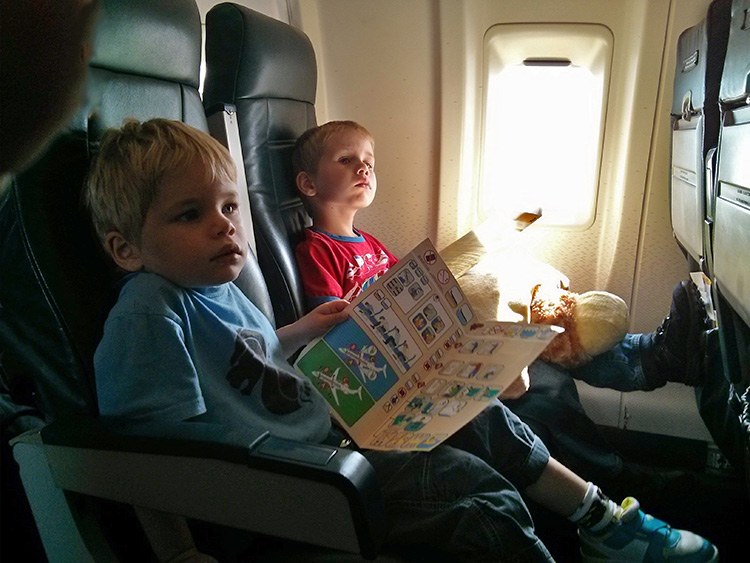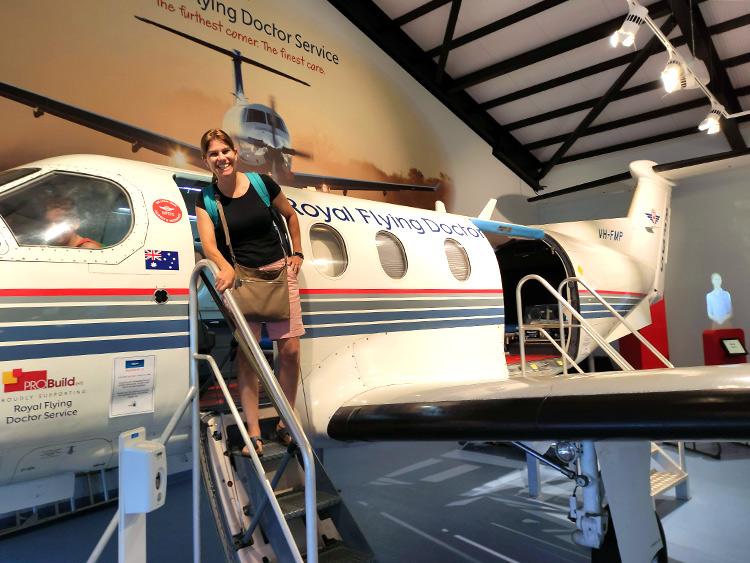Travel Health - Airplane Health
[ back to Travel Health ]
Keeping your health in the air
Long distance airplane flights pose a risk to your health in several ways. You are being inactive and seated for a long period of time, in an altered environment, getting poor or no sleep, and changing time zones. Although you are not likely to have any problems during or after your flight, all these factors can potentially have health implications.
The following guidelines can minimise any problems you may have and make the flight more comfortable.
Blood Circulation
Sitting inactive for long periods results in blood pooling in the legs, and blood vessels can also be compressed making it harder for blood to return to the heart. Deep Vein Thrombosis (DVT) is a rare occurrence but some people are at risk. If you are concerned, seek medical advice before travelling. To ensure good blood circulation, wear lose fitting comfortable clothing. Compression stocking are available which reduce the swelling you get from being seated for long periods, and increases blood flow back from the lower extremities. You should make sure you move your legs for a few minutes every hour, either by doing some exercises or getting up and walking up and down the cabin.
|
Air Pressure
Some people get problems with the cabin air pressure , particularly during descent. Here are some recommendations to help reduce these problems:
- to clear the nasal passages, use nasal sprays, decongestants or antihistamines
- to 'clear' your ears you can swallow, yawn or chew
- for infants, feed them or give them a dummy to suck on.
- if you have a pre-existing medical condition, you can usually request supplemental oxygen (you may need to give notice before your flight)
Motion Sickness
Motion sickness is caused by a conflict between the body's sense of vision and equilibrium (inner ear). Air turbulence can make it worse as fluid in the vestibular apparatus moves, and when this movement does not correspond with what you see (as you are moving with the plane) you get the feeling of motion sickness. To help reduce this feeling, you should avoid reading or watching a movie, and look out the window and keep your eyes fixed on a non-moving object such as the ground or the horizon. Sitting in a window seat is better for this. There are also medications available to prevent motion sickness - consult your doctor about what is appropriate for your situation.
|
Exercises
The following exercises are possible to do while sitting on the plane, and are suitable to reduce muscle stiffness and increase circulation. Perform these exercises for 3-4 minutes every hour.
- Foot Pumps - alternately lift you heels and ball of your feet
- Ankle Circles - lift your feet of the floor and circle both clockwise and anti-clockwise
- Knee LIfts - bend your legs at the hips to alternately lift your knees
- Neck Roll - gently roll your head in circles and rock it from side to side
- Shoulder Roll - rotate your shoulders in circles backward sand forwards
- Forward Flex - bend your trunk forward
More Information
see also the page on preventing jet-lag
Do you have feedback, a comment or correction? Let us know


